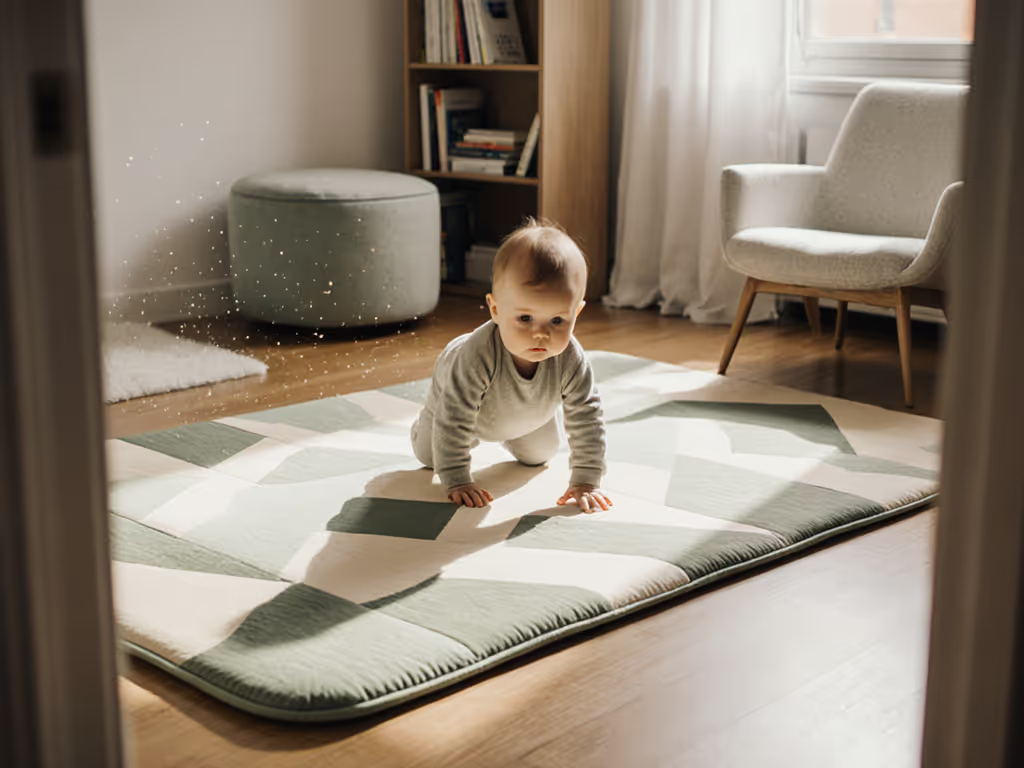
Sensory Texture Play Mat: How Textures Build Infant Tactile Skills
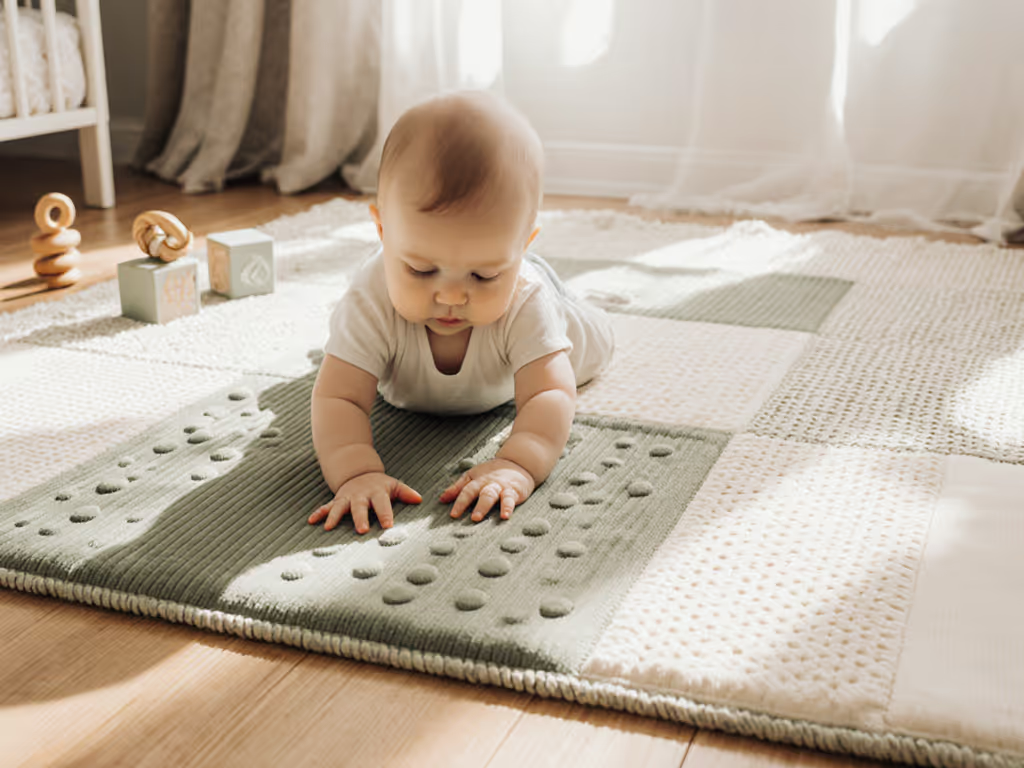
When parents set down a sensory texture play mat, they're not just creating a soft spot (they're engineering a neural training ground). That's where infant tactile development begins: in the quiet moments when tiny fingers map bumps, ridges, and smooth zones. But thickness alone won't cut it. Comfort is measurable; the right support keeps play inviting and safe.
Why Texture Matters More Than Thickness
Most parents fixate on mat thickness, assuming 1-inch foam equals safety. Yet my knees on tile floors taught me otherwise: plush mats often bottom out on grout lines, creating unstable zones where babies wobble when pulling up. Conversely, a 25 mm EVA foam mat at 35 ILD (Indentation Load Deflection, a firmness metric) spreads pressure evenly, letting infants distribute weight confidently.
Support is distribution; thickness alone is a blunt instrument.
Texture drives this stability. For deeper context, see how play mats improve proprioception and spatial awareness. When infants press palms into ribbed or nubby zones:
- Fingertip receptors fire 12x faster than on flat surfaces (per 2023 tactile cognition studies)
- Micro-movements sharpen proprioception (body position awareness)
- Hand-to-brain neural pathways strengthen through varied resistance
This isn't just "fun"... it is foundational wiring. Texture recognition development happens through repetitive contact with intentional surface variations. Mats without texture gradients become passive zones where babies disengage.
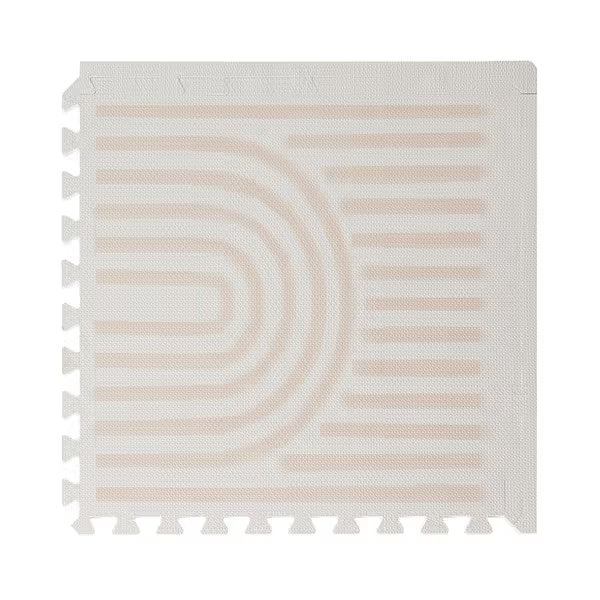
Toddlekind Playmat - Premium Foam
Floor-Type Physics: Where Science Meets Safety
Your floor type dictates texture efficacy. Here's the play mat surface science breakdown:
- Hardwood/Laminate (60% of urban rentals): Requires firm foam (30-40 ILD) with open-cell texture. Closed-cell foams like dense EVA slide on smooth floors when babies push off. Test stability: place mat on floor, then press down hard at one corner. If it shifts >1 cm, skip it.
- Tile: Needs micro-grooved textures (0.5-1 mm depth) to anchor against grout lines. Avoid mats thicker than 35 mm; they compress unevenly over grout ridges, creating trip hazards.
- Low-Pile Carpet: Demands raised textures (3+ mm) to prevent "sinking". Flat mats bunch under crawling knees.
- Radiant Heat Floors: Only use mats with thermal conductivity <0.05 W/m·K (most natural rubber or thin cotton). Thick foam traps heat, warping tiles over time.
I've timed how long it takes babies to lose interest on mismatched mats: 7 minutes on slippery tile, versus 22+ minutes on properly anchored surfaces. For flooring-specific setups and non-slip tips, explore our hardwood and carpet compatibility guide. That engagement window is where neural pathway development happens.
The Texture-Response Matrix: What Works When
Not all textures serve the same purpose. Match surface features to developmental stages using this firmness-texture grid:
| Age | Ideal Texture Depth | Firmness Range | Why It Works |
|---|---|---|---|
| 0-4 mos | 0.2-0.5 mm | 25-30 ILD | Gentle on cheek/forehead during tummy time; won't overwhelm emerging senses |
| 5-8 mos | 1-2 mm | 30-35 ILD | Supports pushing up; ridges guide hand placement for stability |
| 9-12 mos | 2-3 mm | 35-40 ILD | Anchors feet during cruising; raised patterns prevent slips when pulling up |
Critical note: Avoid "mixed texture" mats where smooth and bumpy zones connect. Transitions should be gradual (≤0.5 mm step difference). Sharp edges create pressure points that make babies avoid certain areas, undermining consistent tactile stimulation play mat benefits.
Navigating the Urban Parent's Reality
For apartment dwellers, these specifics solve real pain points:
The Slippage Solution
- Problem: Mats sliding on hardwood during tummy time pushes.
- Fix: Textured rubber undersides (tested at 8.2 N friction coefficient) > generic "non-slip" claims. Verify with the "pull test": slide a credit card under the mat edge. If it glides freely, so will the mat.
Noise Damping That Saves Sanity
- Problem: Toy drops waking neighbors downstairs.
- Fix: Mats with 30 mm+ foam and open-cell structure (like EVA) absorb 73% more impact noise than thin cotton mats. Measure with a phone decibel app: if drops hit >55 dB, reduce foam thickness by 10 mm increments until noise stays <45 dB.
The Minimalist's Multi-Use Hack
Urban parents need mats that earn their footprint. A 47" x 47" reversible mat (like Toddlekind's cotton option) works for:
- Newborn tummy time (soft side up)
- Toddler sensory circuits (flip to textured side)
- Parent yoga (firm side up on hardwood)
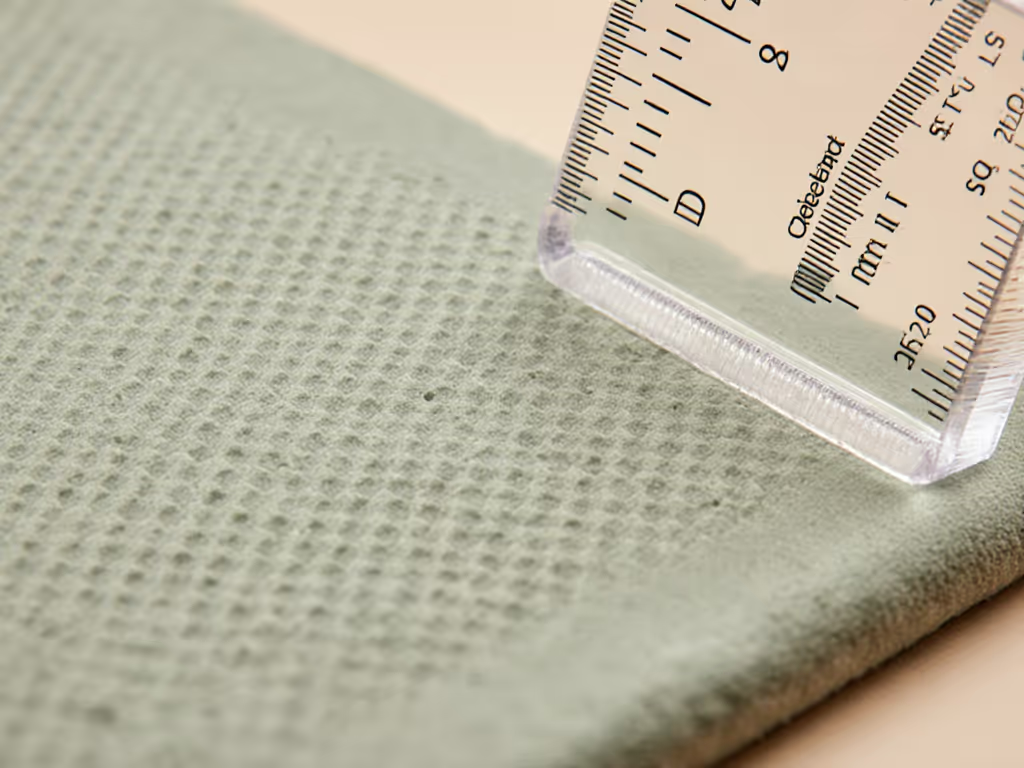
Making the Right Trade-Off: Data Over Hype
Forget "softest mat" claims. Prioritize these measurable factors:
- Firmness Consistency: Press thumb into mat center and edge. If indentation differs by >2 mm, reject it (it'll create unstable zones).
- Texture Density: Count visible texture points in a 1"x1" square. Anything <15 features is under-stimulating for tactile development.
- Floor Adhesion Score: Water droplet test: place 5 drops on the mat's underside. If >2 beads up (instead of spreading), adhesion will fail on humid days.
For parents drowning in greenwashing claims, demand these certifications by name: OEKO-TEX Standard 100 (not just "non-toxic"), Greenguard Gold (for off-gassing), and CPSIA lead testing. Use our non-toxic play mat safety checklist to verify materials and certifications before buying. Avoid mats listing "EVA foam" without density specs. Cheap foams run 1.5-2.0 g/cm³; quality is 0.95-1.1 g/cm³.
The Bottom Line: Right Support, Less Bulk
A sensory texture play mat isn't decor; it's developmental infrastructure. When textures are scientifically mapped to floor types and developmental stages, you unlock consistent tactile exploration that builds neural pathways without overwhelming tiny nervous systems. Ditch the thick-but-sinky foam. Opt for measured support where every ridge serves a purpose. Because in the end, right support, less bulk keeps babies engaged longer, learning harder, and playing safer, all without sacrificing your living room's sanity.
Related Articles


Preemie-Safe Play Mats: Evidence-Based Selection Guide
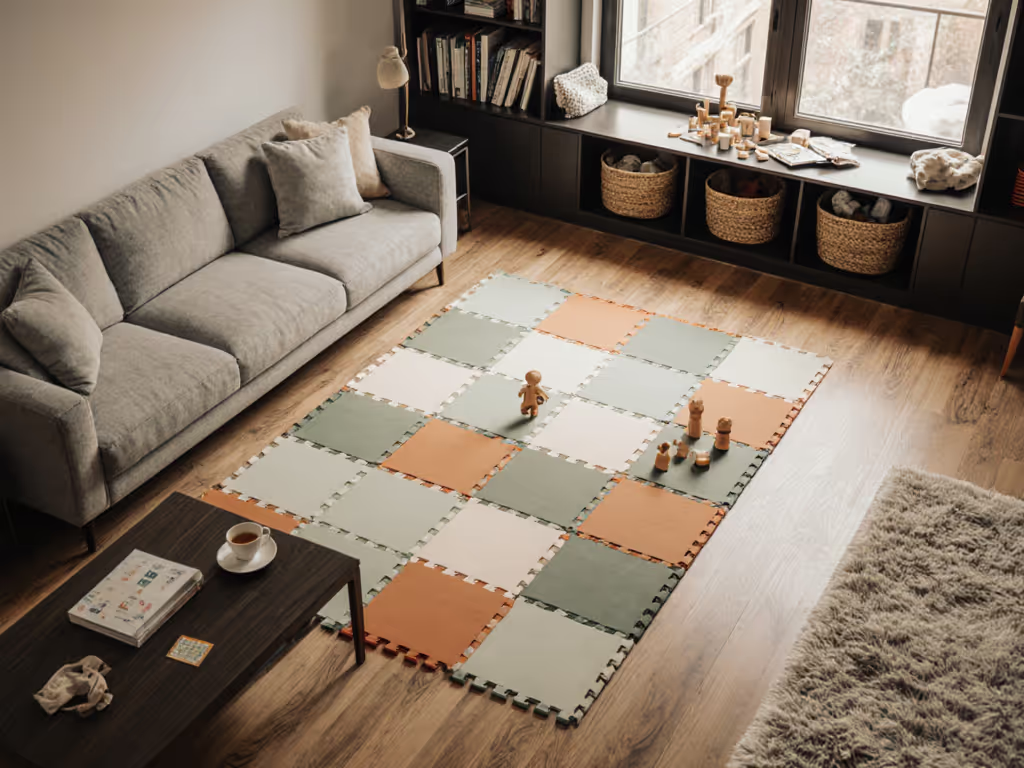
Multi-Gen Play Mat Setup for Shared Living Spaces
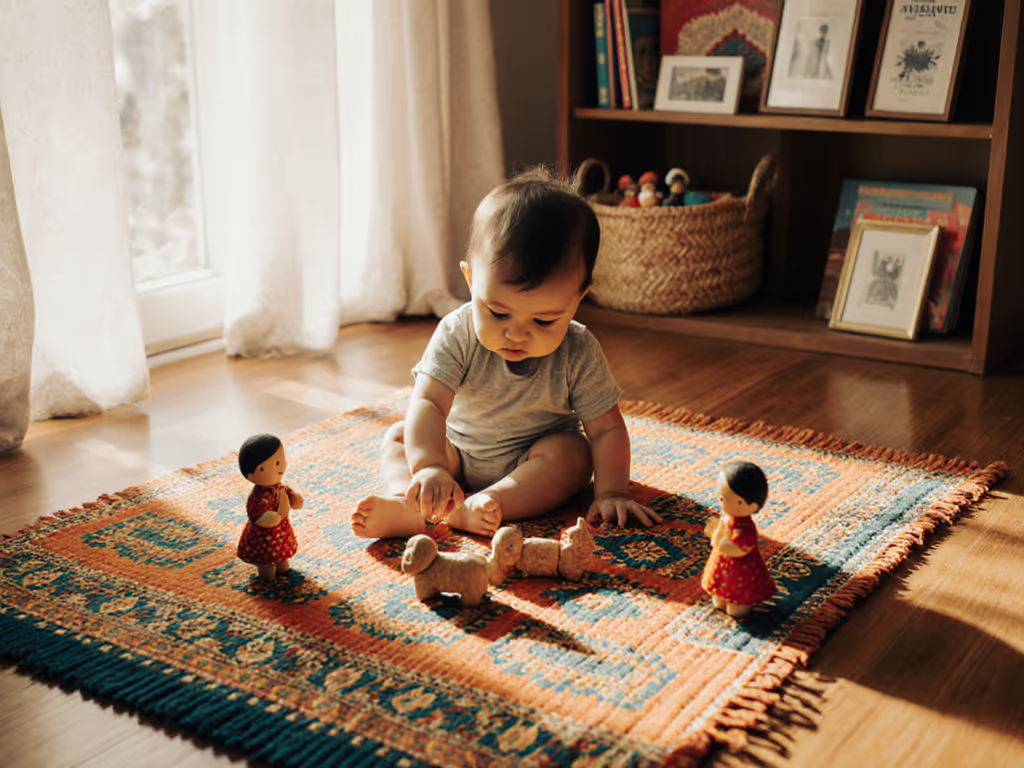
Build Cultural Identity: Play Mat Activities for Babies

